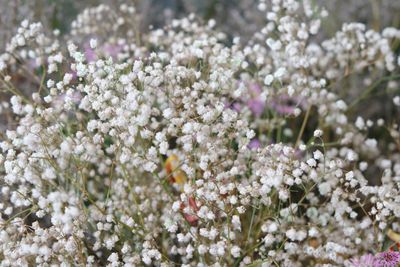However, if choosing to grow baby’s breath in the flower garden, there are some common Gypsophila diseases that may cause rapid decline in the health of the plants – problems you should be aware of.
Common Problems with Baby’s Breath
Baby’s breath disease issues can generally be divided into two of the most likely to occur issues– blight and rot. While these diseases of baby’s breath plants are common, prevention is often the key to avoiding the loss of plants. Additionally, awareness of the signs and symptoms will help to control and prevent the spread of infection throughout other plantings of the flower.
Blight on Baby’s Breath Plants
Issues with blight on baby’s breath may first manifest when flowers turn a dark, almost black color. Other signs of blight in baby’s breath plants may be seen in the development of dark spots along the stems. Once blight has become established, it can easily spread among baby’s breath plants. Many issues with blight can be avoided by making certain to avoid overhead watering. Plant materials infected with blight should be removed from the garden and destroyed.
Baby’s Breath Crown and Stem Rot
Rot can infect baby’s breath in the crown of the plant as well as the stems. Sources of rot can be caused by soil borne pathogens that are the result of poor garden maintenance or soils that do not drain sufficiently. Among the first signs of rot in baby’s breath plants is a sudden yellowing of leaves or complete collapse of the plant. In many cases, rot can cause complete loss of the baby’s breath plants.
Preventing Diseases of Baby’s Breath
While some problems with baby’s breath can often be prevented, some cannot. Particularly, issues involving warm temperatures may manifest, regardless of the grower’s care. However, by maintaining optimal growing conditions, gardeners can best attempt to prevent diseases of baby’s breath plants. This includes making certain that the plants receive adequate sunlight, irrigation, and soil nutrients. Additionally, gardeners should always plant at an appropriate spacing so that air circulation around the plants allows for optimal growth.
